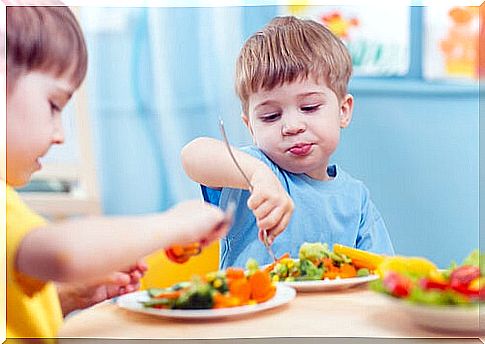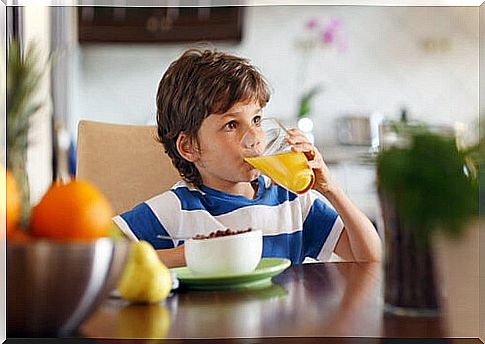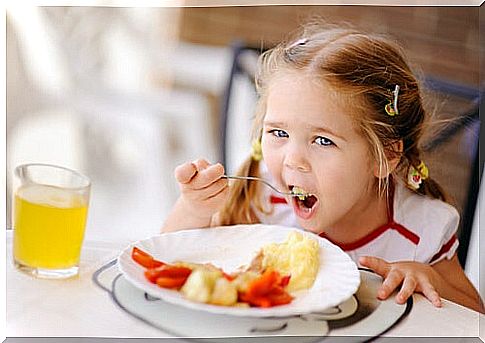9 Psychological Techniques To Get Children To Eat

For parents, feeding their children is one of the main concerns. Erroneous beliefs, the pressure of the environment or our own fears make us become excessively involved and in many cases achieve an effect contrary to what we wanted, emerging the famous self-fulfilling prophecy.
Children, like adults, also have reasons for not eating certain foods or eating smaller amounts on some occasions. This is what we would have to analyze to later be able to solve it.
What we would like is for our children to eat without any effort, that they like everything and that they eat the whole plate, but that happens rarely and we must be patient. Sometimes the textures, colors, smells or flavors can be very new for them and we have to give them a period of adaptation.
Let’s put ourselves in their place, something very important in any social relationship and more so when it comes to our children. We do not like everything either and it is not a dish of good taste – never better said – that they pressure us to eat something.
Some techniques from psychology for children to eat
There is no infallible method to get a child to eat the way we want, but there are some strategies that as parents we can use so that our child becomes a little more friendly with meals.
A time for meals
Meals should last between twenty and forty minutes, no longer. If they are very fast, they make digestion difficult, which can cause the child to create an association between their discomfort and mealtime. Think that what we are looking for is precisely the opposite: that associates pleasure with food.

Not give in
Many parents, desperate, what they do is give in: before the continuous refusals of the children, they prepare another dish that they do like. With this they get him to eat, but not to be nourished, which is what is really important. The child reduces his food to two or three, so the variety is almost nil. In addition, their feeling is that they can with their parents if they are a little insistent, which will make them continue with that attitude and even generalize it to achieve other wishes.
Do not eat with the television or with any distractions
Eating should be a relaxing activity on its own, you do not need television or singing any song to eat. The child must savor the food, enjoy its smell, the company of the rest of the guests, etc. Distractions cause the child to stop eating, as it changes his focus of attention.
Do not press
Just as we must not give in, we must also not push. When we pressure anyone to do something, we rob them of their freedom and this makes them nervous and defensive. Children like to be contrary to parents because they love to get attention and this is a good way. Therefore, the rules are said once, but we do not push.
No punishment or yelling
With them there is another association: mealtime = punishments and therefore, it can lead to a phobia of food and food, which is not recommended. We need to be firm and serious but that is not the same as yelling and punishing. It is one thing to set limits and another to exceed them ourselves.
Cognitive therapy: making the child want to eat certain foods or dishes
Thoughts are the key to our behavior. That is, if I think negative things about food, I will not eat, but if I think positive things, it will be easier for me to agree to try them. As parents we will have a lot of cattle if we get children to “enter through the ear” food. Have you not realized that when you are presented with a dish with a more beautiful name, you want to try it more?
If they are very young, another strategy you can use is to make up interesting stories about the dishes. My mother, when I was little, told me that vegetable puree was the food of the Magi from the East and with this, which seems absurd to the eyes of an adult, she managed to get me to eat vegetable puree every week.
Forbidden food
Let them choose two or three foods that after they have tried them, they do not like. They are within their rights and this will make them see that their decisions are taken seriously and respected. We will accept that these foods are not going to be eaten; Fortunately, we can find all the essential nutrients in many types of food.
Dishes adapted to them
This is super important. We should not put the children the same dishes that we put ourselves, it is much better to start with small amounts and then, if you want, repeat. A large amount of food can overwhelm the child and put him back at mealtime.

You can choose the dessert
As positive reinforcement, and with the power that desserts have for children, we can use this last strategy : let them choose the dessert. This will motivate the child during the meal, knowing that the final prize comes next. If we get that dessert to be made up of fruits or dairy, better than better, but don’t forget to be flexible.
But remember: the most important thing is to be patient and that the child does not notice that you despair. Step by step, great strides are made and your child will grow up, that’s for sure.









